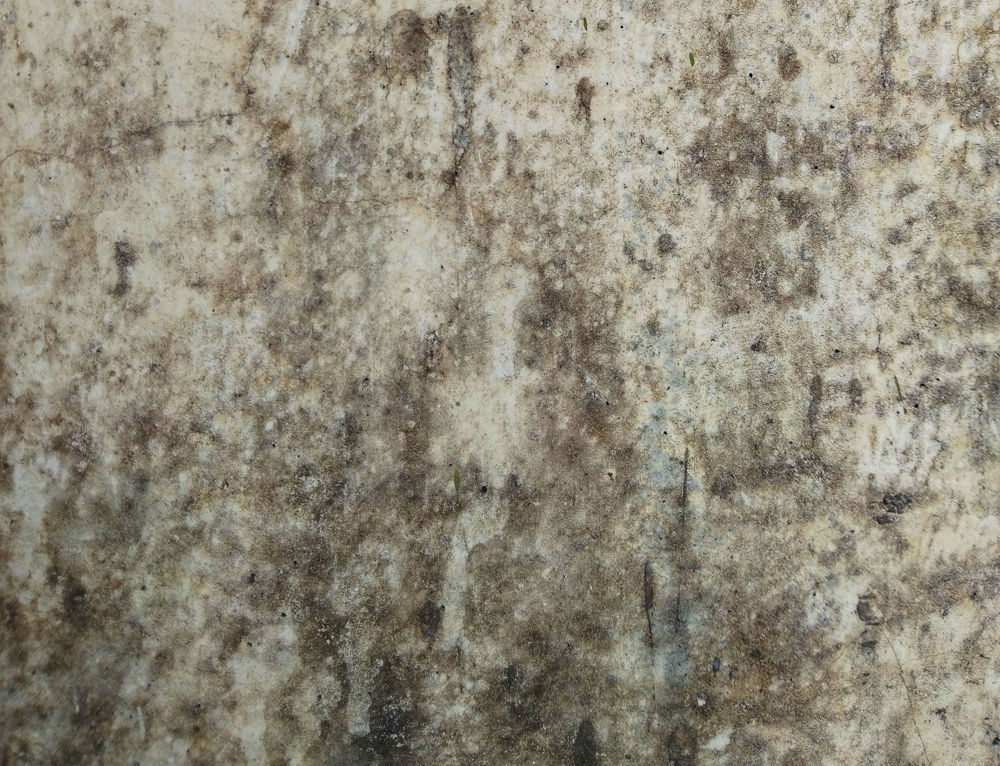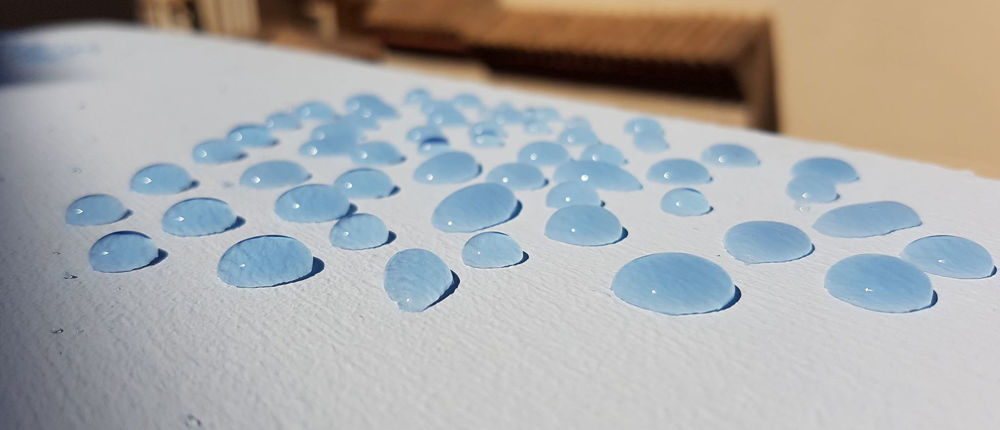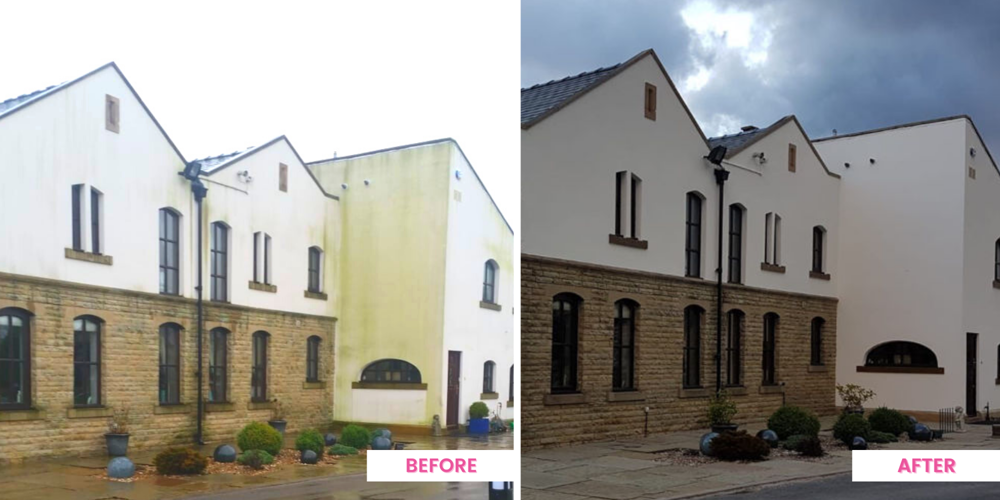
Solving damp problem in our homes is one of the main jobs on the list for many of us when it comes to the cooler months, when it can become a real headache. Dealing with the damp problem as soon as possible is crucial in order to limit the damage it can cause, which is why our team of experts have put together this guide with everything you need to know about how to get rid of damp on your walls for good.
What Causes Damp Walls?
The first step in dealing with damp problems is to understand exactly what has caused it in the first place. Damp is caused by an excess of moisture within a property, where the build-up of moisture creates the ideal conditions for black mould & other growth to thrive.
There are three common causes of damp walls:
1. RISING DAMP
Rising damp is caused by moisture from the ground that travels up through the walls of a property by capillary action. In short, moisture is sucked up from the ground and is allowed to travel up through the ground level of the building. This rising damp is caused by a failure or non-existence of a damp proof course (DPC), which creates a water resistant layer at the bottom of the wall to prevent the moisture transferring from the ground into the wall. This is a relatively rare form of damp that can be identified by large wet patches that slowly travel up the internal wall and by tide marks of salts.
2. PENETRATING DAMP
Penetrating damp like rising damp is caused by an external source of moisture, but that occurs due to water ingress through an external wall of a property. Occurring at any level of the building, moisture is absorbed by the porous brickwork or can travel through any defect in the external wall, such as a crack. Many homeowners believe that brickwork is naturally waterproof, however the reality is brickwork can be highly porous, meaning it will absorb moisture. Once the moisture enters the external wall, it can pass through the external wall into the inside of the property, causing large-scale internal damp. Penetrating damp can be identified by damp staining on external walls, internal mould, walls that are damp to the touch, crumbling plaster and by any signs of damage to the external wall, such as spalled or cracked bricks & crumbling mortar.
3. CONDENSATION
Damp internal walls can the result of condensation, caused by people closing their windows and from the added humidity from heating the property. This is common in the autumn and winter months and can be identified in problem areas such as bathrooms or around window & door frames. If you have no signs of damp on the external wall of the property and the damp is only occurring in those problem areas, this may be an indication that condensation is causing damp, rather than an external source of moisture.
Problems Caused By Damp Walls
The problems that can occur due to damp walls are endless. Damp on walls not only causes an aesthetic issue but will also cause problems with the performance of the property.
The main symptom of moisture rich conditions is black mould spots across the internal walls of a property, which can cause a variety of health issues such as skin conditions & respiratory problems, especially with people who are more sensitive to these problems.
Potentially the most damaging symptom of damp problems is structural damage. With penetrating damp in particular, brickwork can crack, which in turn allows more moisture to enter the external wall. When this moisture undergoes a freeze-thaw cycle, it will expand causing the defect to worsen. This allows more water to enter, creating a continuous cycle of damage that can be very costly to repair. Furthermore, the internal damage to decorative paintwork, plaster & wallpaper can be significant with high-levels of moisture. While this is not structural, it can be an extremely visible and frustating knock-on effect of the damp problems that will cause the need to redecorate down the line.
One of the key indicators of damp is a cold property. This is because wet walls transfer heat much quicker than dry walls, meaning lots of heat is lost from a property as the heat is directed to drying to wet walls rather than heating the house. High energy costs follow as homeowners struggle to heat their home, costing money & wasting energy unnecessarily. By preventing moisture from creating damp walls, significant improvements to the energy efficiency of a property can be made and a saving can be made on heating bills.

Treating Damp Walls
The first step when finding a solution to your damp problems is to identify what the source of the damp is. Once this has been done, you can then consider potential solutions.
Damp problems will only worsen over time if the source of the moisture is not found. On a yearly basis, many homeowners struggle to regulate the moisture in their homes using dehumidifiers, however this is only a temporary solution. You must address the core source of the damp if you are to permanently get rid of damp on your walls. If you are aware of the source of the damp, here are some of the most common solutions:
- Rising damp - a damp proof course (DPC) is the easiest and most cost-effective way to prevent rising damp. This involves injecting a damp proofing cream into the mortar on the ground floor wall. Once injected, it becomes a liquid which can penetrate the bricks, creating a water repellent layer within the brickwork to prevent the transfer of moisture up the external wall.
- Penetrating damp - to solve penetrating damp, water must be prevented from absorbing into the external wall of the property. This is done using highly advanced exterior paints & coatings that create a water-repellent surface on the external wall, preventing rainfall entering the building. Crucially, these products must remain completely breathable as sealing the surface will cause moisture to build-up inside the property, causing even more damage.
- Condensation - condensation problems are generally solved by improving the ventilation of a property, either through the use of a dehumidifier or by opening windows more regularly.
Rising Damp Treatment
The implementation of the DPC involves injecting a solution which creates a waterproofing barrier between the ground and the brickwork. Due to the nature of this work, it is recommended that you contact a damp proofing expert in order to address rising damp.
Condensation Treatment
For condensation, there are a number of simple steps you can take to reduce damp. Improving the ventilation of a room is essential for allowing the condensation to escape before it can gather and cause mould growth. Open windows regularly and move furniture away from walls to allow air to circulate more effectively around the room.
In problem areas such as bathrooms and kitchens or rooms it is recommended to apply a treatment to prevent the condensation forming. There are a number of paints available, from anti-mould and anti-damp paints to thermal insulating paint. While some anti-damp paints kill black mould when it grows on the wall by containing harmful biocides, more advanced thermal insulating paints prevent the formation of condensation on interior walls in the first place.
Penetrating Damp Treatment
As we have mentioned, the most common form of damp on internal or external walls is caused by penetrating damp, which is also something that can be treated at home yourself. In order to treat penetrating damp, in short you must prevent water from coming through the wall.
Start by checking any guttering for blocks and check the water tightness of your windows to see if this may be causing an isolated ingress of water. If these areas are clear, take a thorough look at the brickwork on your property to check if there are any obvious signs of damage such as cracks, crumbling mortar or spalling bricks. Spalling bricks is the flaking, crumbling or chipping of the external brick or stone, often causing the face of the brick to look extremely weathered. After you have checked these areas, make any repairs that you may need. In the case of cracks, you can fill these using a good-quality exterior filler. Once any defects are repaired, the external wall must be waterproofed to prevent any moisture absorbing into the building.
There are a number of waterproofing solutions available to homeowners that are designed to prevent water ingress and protect properties from damp. Unfortunately, there is a large amount of confusion and misinformation regarding these waterproof treatments, especially in the UK. This comes from many products, known as 'sealers' being developed. These sealers get their name as they create a waterproof seal on exterior bricks that prevents any moisture from entering the brick, stone or concrete. While these products can successfully seal the outside of external wall, they also trap moisture inside the property, which prevents moisture from the internal structure escaping. If moisture is not allowed to freely escape a property, it will gradually build-up and make damp problems even worse, which is the complete opposite of what these products are meant to do. The build-up of moisture will eventually cause structural problems as the brick or stone underneath the sealer is attacked by the moisture, causing it to crumble and crack. Eventually, the sealer will fail in a matter of years, or even months, eventually allowing the ingress of water once again.
This is due to these brick sealers not being breathable, which is the measure of how water vapour can freely travel through a building material. A waterproofing product that is designed to be applied to exterior walls must be highly breathable in order to be an effective treatment for damp, preventing water from soaking into the external wall, while allowing water vapour to freely escape through the wall. If a product does not have an SD value of below 1, it is not breathable and therefore should not be applied to any building, but especially those prone to damp.
Due to this, advanced water repellent products were developed using nano-technology to line the pores of a material, creating a waterproof surface. While lining the pores of the surface to prevent water passing through, the nano-technology does not seal the surface completely, allowing water vapour to pass through the pores & creating a one way passage for moisture to travel.

These water repellent products come in two forms, coloured waterproof masonry paint or clear masonry cream. While masonry paint is a coloured paint that creates an attractive waterproof finish on external walls, masonry cream is an invisible waterproof treatment that penetrates into natural mineral surfaces such as brick, concrete & stone. Once absorbed into the surface, they chemically bond in order to create an invisible water repellent surface that does not alter the appearance of the exterior wall.
Here at Emperor Paint, we offer both forms of exterior wall coating that contain our highly advanced super hydrophobic technology that completely repels water, resulting in it beading off the treated surface. While repelling water, they also remain highly breathable. In extensive independent testing conducted by UKAS accredited laboratory Lucideon, 25-year accelerated weathering tests showed that both treatments prevented water absorption by 96%, had a breathability SD rating 0.03 (considered highly breathable) and they showed no signs of deterioration after a 25 year period, which is why both products come with a lifetime guarantee. Emperor Masonry Paint in particular will not peel, blister or flake due to its extreme durability. The tests also demonstrated that by keeping exterior walls dry, Emperor Masonry Paint & Emperor Masonry Creme were found to keep treated walls 6°C warmer on average when compared to an untreated wall. This was due to the significantly lower moisture levels in the treated walls that helped prevent heat loss. Following the results, both products were verified by the Energy Saving Trust due to their ability to prevent energy waste thanks to their insulating properties.

Due to the highly advanced technology in both exterior treatments, they create a self-cleaning surface on external walls as dirt cannot attach itself to the surface and external damp patches are prevented by preventing moisture absorption. This keeps properties looking pristine for decades to come without the need for constant maintenance, plus they discourage the blooming of fungus and other green growth.
Cavity Walls & Damp
Unfortunately, penetrating damp can occur in both solid-wall constructions and properties with a cavity wall. Firstly, in the case of solid-wall construction, there is no cavity to prevent the moisture transferring from the external wall into the internal wall. This means that many older properties are susceptible to penetrating damp, especially as they are often prone to defects such as cracked brickwork that has occurred over many decades.
Cavity walls can be a common cause of damp as it can often be poorly installed. When cavity insulation is installed, it removes the space necessary for water to freely escape the building, instead acting as a bridge for any water ingress to reach the internal wall. This is not always the case, however in areas of the property that are particularly exposed to wind-driven rain, the high levels of moisture can cause this transfer of moisture. Poorly fitted cavity wall insulation can also cause problems as they can have unfilled mortar joints, debris and wall ties covered that also create this bridge for moisture to enter a property. Gaps in the insulation likewise can lead to temperature variations on the internal walls, which can result in condensation and mould when any warm areas touch a cold spot.
In reality, whether your home has a cavity wall or a solid wall, moisture soaking into an external wall can cause a problem under the right conditions.
Frequently Asked Questions
Q. HOW DO I APPLY A WATERPROOF MASONRY PAINT OR MASONRY CREAM
Both products are designed to be applied by homeowners, preventing the need to pay a professional that can cost in the thousands. Both products can be applied like any exterior paint using a brush, roller or spray machine, once the surface is first cleaned using Emperor Masonry Cleaner, in order to kill any fungal growth on the external wall.
In the case of Emperor Masonry Paint, as a coloured paint, any bare surfaces must be primed using Emperor Masonry Primer to prevent the paint from soaking into the surface. This primer in particular must be used as it contains the same super hydrophobic technology as the paint, ensuring full performance. If the surface has been previously painted, you do not need to use a primer. The paint can then be applied to the external wall in two-coats at a coverage of 5-6m2 per litre.

The masonry cream as a clear treatment should be applied to bare brick, stone or concrete only. This is because it must be able to penetrate into the surface and chemically bond in order to provide waterproof protection. The gel like cream is applied to the brickwork in one coating and is then left to absorb into the brick over the course of a few hours. When fully absorbed, it will leave a completely invisible finish on the external wall. When applying masonry cream it is important apply the correct thickness as too much will fail to absorb and too little will not provide full performance. The recommended coverage of the masonry cream is 3-5m2 per litre, which will depend on the roughness of the surface. You should apply enough cream that the majority of the surface is covered, but a small amount of the brickwork underneath can still be seen. The image below is a useful reference if you need a visual guide of how much to apply.

Q. CAN YOU PAINT OVER MASONRY CREAM?
Due to the water repellent surface that masonry cream creates, it cannot be painted over the top of using a masonry paint. If you want a coloured finish, you must opt for a waterproof masonry paint that offers the water repellent properties but will create a paint film on the external wall.
Q. CAN I PAINT ON TOP OF DAMP WALLS?
You must have dry conditions in order to apply these exterior coatings. Allow the masonry to dry out before applying the penetrating damp treatments, ensuring you leave yourself enough time to fully apply it to the wall and for it to dry before it rains. You must also not apply them in conditions below 5°C, as with any water-based exterior product.
We hope we have answered the questions you may have had regarding damp walls. Want more help & advice? Our in-house experts are on hand to answer any questions you may have regarding damp & the best solution for you. To contact one of our experts, simply email info@emperorpaint.co.uk. Alternatively, shop Emperor Masonry Paint or Emperor Masonry Creme today & get FREE delivery on all orders.

